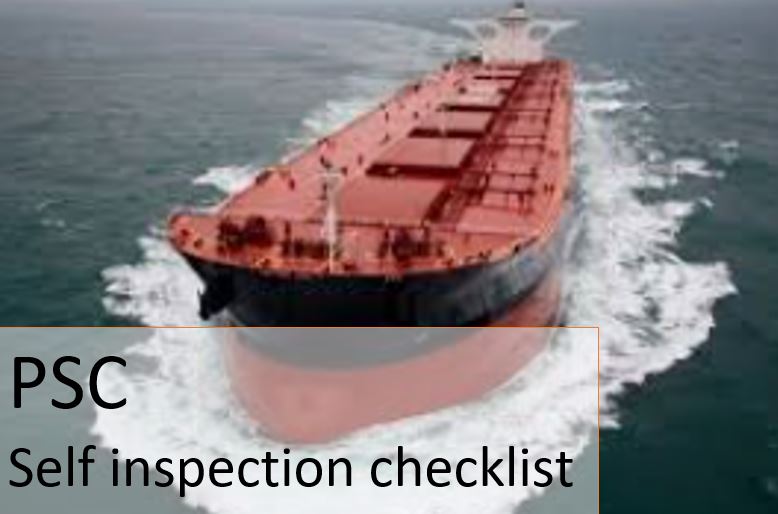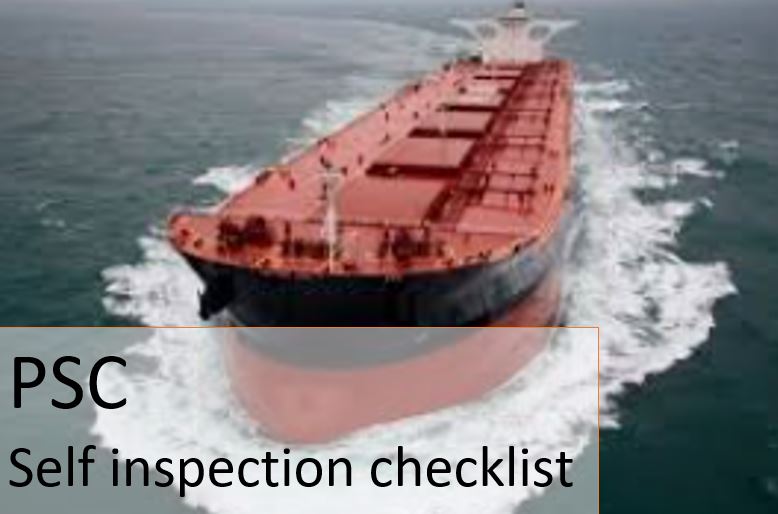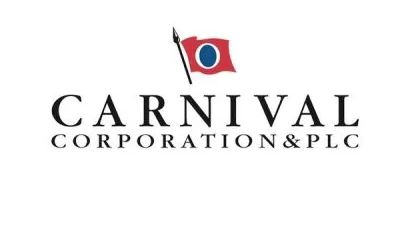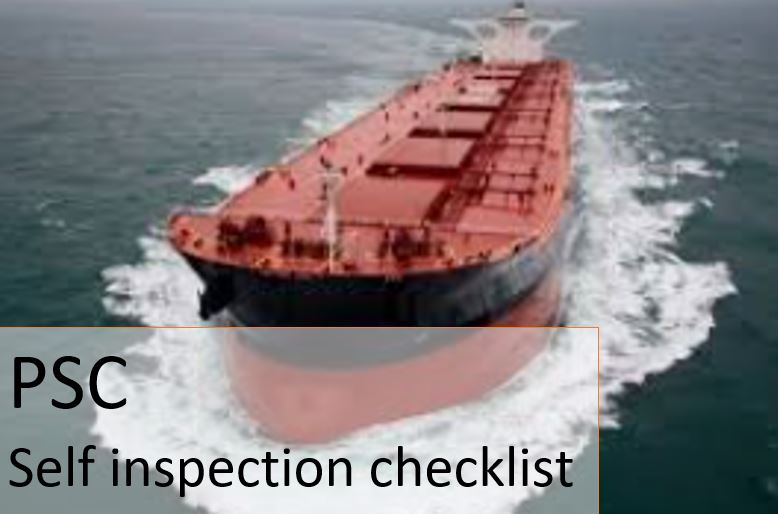Information
-
Document No.
-
Vessel Name
-
Date
-
Prepared by
-
Location of Inspection
-
Any Supporting Officers Present
-
GENERAL DETAILS
-
Inspection Report No.
-
Port State
-
Inspecting Authority
-
Principle Inspector
-
ID No.
-
Port of Inspection
-
Commencement of Inspection
-
Completion of Inspection
-
Advanced Notification received?
PORT CALLS
-
Purpose
-
Specify
-
Last Port of Call
-
Port
-
State
-
Date of Last Port of Call
VESSEL DETAILS
-
Vessel Name
-
Flag State
-
Vessel Type
-
IRCS
-
Certificate of Registry ID
-
IMO Ship ID (if applicable)
-
External ID (if applicable)
-
Port of Registry
-
Photograph of Vessel Symbols
OWNERSHIP & MANAGEMENT DETAILS
-
Vessel beneficial owner(s), if known and different from vessel owner
-
Vessel Operator(s), if different from vessel owner
-
Vessel Captain (Full Name)
-
Vessel Captain Nationality
-
Photograph of Captain
-
Is there a Fishing Master for the Vessel?
-
Fishing Master's (Full Name)
-
Fishing Master's Nationality
-
Photograph of Fishing Master
-
Vessel agent
VESSEL MONITORING SYSTEM
-
National VMS
-
RFMO VMS
-
Unit(s) Functioning
-
Type
-
Remarks;
AUTHORISATIONS AND ACTIVITY
-
Status in RFMO areas where fishing or fishing related activities have been undertaken including any IUU vessel listing
-
Vessel Identifier
-
RFMO
-
Flag State Status
-
Vessel on Authorised Vessel List
-
Vessel on IUU list
Relevant Fishing Authorization(s)
-
Identifier
-
Issued by
-
Specify
-
Validity
-
Fishing Area(s)
- PNG
- SLB
- FSM
- KIR
- NRU
- PLW
- MHL
- TUV
- VUT
- FJI
- WCPO
-
Target Species
-
Specify
-
Gear
- PS
- LL
- PL
- PT
- MS
- OTHERS
-
Specify
Relevant Transhipment Authorization(s)
-
Identifier
-
Issued by
-
Specify
-
Validity
Transhipment Information concerning donor vessels
-
ID No.
-
Target Species
- TUN
- MAS
- PRA
- SHK
- OTHERS
-
Specify
-
Product form
-
Specify
-
Catch Area(s)
- PNG
- SLB
- FSM
- KIR
- NRU
- PLW
- MHL
- TUV
- VUT
- FJI
- WCPO
-
Flag State
-
Name
Evaluation of offloaded catch (quantity)
-
Catch Area(s)
- PNG
- SLB
- FSM
- KIR
- NRU
- PLW
- MHL
- TUV
- VUT
- FJI
- WCPO
-
Quantity declared (mT)
-
Difference between Quantity declared and Quantity determined, (if any)
-
Species
-
Specify
-
Product form
-
Specify
Catch retained on-board (quantity)
-
Species
-
Specify
-
Product form
-
Specify
-
Catch Area(s)
- PNG
- SLB
- FSM
- KIR
- NRU
- PLW
- MHL
- TUV
- VUT
- FJI
- WCPO
-
Quantity declared (mT)
-
Quantity retained (mT)
-
Difference between Quantity declared and Quantity determined, (if any)
-
Examination of Logbook(s) and other documentation
-
Compliance with applicable catch documentation scheme(s)
-
Compliance with applicable trade information scheme(s)
-
Type of gear used
- PS
- LL
- PL
- PT
- MS
- OTHERS
-
Specify
-
Gear examined in accordance with Paragraph (e) of Annex B
FINDINGS AND ACTIONS BY AUTHORISED INSPECTOR
-
Findings;
-
Apparent infringement(s) noted including reference to relevant legal instrument(s);
-
Comments by the Master
ACTIONS TAKEN
-
Vessel detained
-
Master arrested
-
Catch seized
-
Catch off-loaded
-
Gear seized
-
Instructions to Master
-
Additional Comments
-
Signature of Captain/Master
-
Signature of Authorised Officer
ANNEX B
-
Port State Inspection Procedures
Inspector shall;
a) verify, to the extent possible, that the vessel identification documentation onboard and information relating to the owner of the vessel is true, complete and correct, including appropriate contacts with the flag State or International records of the vessel if necessary;
b) verify that the vessels flag and markings (e.g. name external registration number, International Maritime Organization (IMO) ship identification number, International Radio Call Sign and other markings, main dimensions) are consistent with information contained in the documentation;
c) verify, to the extent possible, that the authorizations for fishing and fishing related activities are true, complete, correct and consistent with the information provided in accordance with Annex A;
d) review all other relevant documentations and records held onboard , including, to the extent possible, those in electronic format and vessel monitoring system (VMS) data from the Flag State or relevant regional fisheries management organizations (RFMO). Relevant documentation may include logbooks, catch, transhipment and trade documents, crew lists, stowage plans and drawings, descriptions of fish holds and documents required pursuant to the Convention on International Trade in Endangered Species of Wild Fauna and Flora;
e) examine, to the extend possible, all relevant fishing gears onboard, including and gear stowed out of sight as well as related devices, and to the extent possible, verify that they are in conformity with the conditions of the authorization. The fishing gear shall, to the extent possible, also be checked to ensure that features such as the mesh and twine size, devices and attachments, dimensions and configuration of nets, pots, dredges, hook sizes and numbers are in conformity with applicable regulations and that the markings correspond to those authorized for the vessel;
f) determine, to the extent possible, whether the fish onboard was harvested in accordance with the applicable authorizations;
g) examine the fish, including by sampling, to determine its quantity and composition. In doing so, inspectors may open containers where the fish has been pre-packed and move the catch or containers to ascertain the integrity of fish holds. Such examination may include inspections of product type and determination of nominal weight;
h) evaluate whether there is clear evidence for believing that a vessel has engaged in IUU fishing or fishing related in support of such fishing;
i) provide the master of the vessel with the report containing the results of the inspection, including possible measures that could be taken, to be signed by the inspector and the master. The master's signature on the report shall serve only as acknowledgment of the receipt copy of the report. The master shall be given the opportunity to add any comments or objections to the report, and, as appropriate, to contact the relevant authorities of the flag state in particular where the master has serious difficulties in understanding the content of the report. A copy of the report shall be provided to the master; and
j) arrange, where necessary and possible, for translation of relevant documentation.














